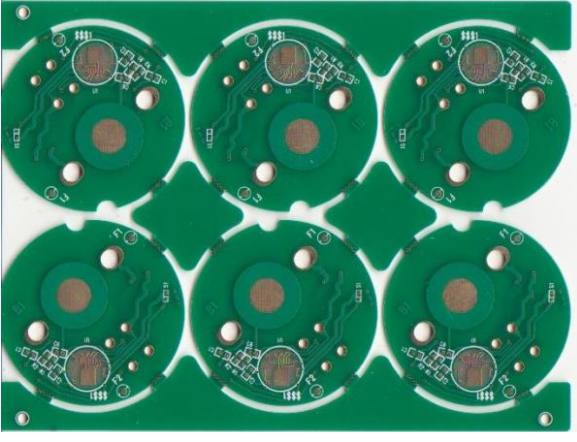PCB aluminum electrolytic capacitors use an aluminum cylindrical shell as the negative electrode, which is filled with liquid electrolyte, and the positive electrode is led out by the aluminum strip and the electrode. After DC voltage treatment, an oxide film dielectric is formed on the anode aluminum tape. PCB aluminum electrolytic capacitors can be made large in capacity and relatively cheap, and are used in low-frequency filtering occasions.
The capacity of aluminum electrolytic capacitors ranges from a few tenths of microfarads to tens of thousands of microfarads, and withstand voltages from 5V to 630V are common. The capacitance error of electrolytic capacitors on PCB circuit boards is generally 20%.
Because of the characteristics of the manufacturing process of aluminum electrolytic capacitors, in actual PCB production, the PCB factory cannot regard the capacitor as an ideal capacitor. It is not only the capacitance characteristics of the capacitor, but also the ESR (series equivalent resistance) and ESL ( Series equivalent inductance) and leakage parameters and characteristics.

The so-called ESR means that the actual capacitor is equivalent to the series connection of an ideal capacitor and a resistor. When the AC current passing through the capacitor is relatively large, the AC current will also pass through the series equivalent resistance at the same time, so the power supply ripple will be hindered and filtered. The effect will be greatly reduced, and at the same time, the ESR will generate heat and affect the service life of the capacitor. Actual capacitors also have certain inductance characteristics, which have an obstructive effect on AC voltage and current. The higher the frequency, the more obvious the effect, so the filtering effect of high-frequency clutter is not ideal. In addition, aluminum electrolytic capacitors still have a certain amount of leakage current. The higher the voltage and the higher the temperature, the more obvious the leakage.
Based on the above factors, circuit designers will reduce the impact of ESR by paralleling multiple aluminum electrolytic capacitors, and at the same time, parallel small capacitors such as ceramic capacitors and monolithic capacitors that filter out high-frequency components on the aluminum electrolytic capacitors. .
The volatilization of the electrolyte of aluminum electrolytic capacitors is inevitable. Therefore, aluminum electrolytic capacitors will almost always be damaged. It is only a matter of time.
Under normal working conditions, the biggest factor affecting the life of aluminum electrolytic capacitors is temperature. For every 10°C increase, the life of the capacitor is halved. According to the author's actual maintenance statistics, good brand capacitors such as NICHICON RUBYCON and other brand electrolytic capacitors generally take more than 10 years to fail, while poor quality capacitors fail in three to five years. When replacing aluminum electrolytic capacitors, pay attention to the reduction ratio of the withstand voltage, and leave at least 15% of the withstand voltage margin. For example, if a 24V power supply uses a 25V withstand voltage capacitor, there should be no problems in a short time, and the problem will appear after a long time, and the life of the capacitor will be greatly reduced. Aluminum electrolytic capacitors are polarized capacitors. Be careful not to reverse the polarity of the capacitors, otherwise there will be an explosion hazard, especially for high-voltage electrolytic capacitors. The explosive power of electrified after the reverse connection will cause lingering fears. Aluminum electrolytic capacitors will be specially marked on the case of the negative pole, which must be compared with the positive and negative poles on the circuit board when replacing. Some industrial PCBs will not mark the polarity on the board. Mark them before disassembly and replacement to avoid replacement and soldering. Time is wrong.